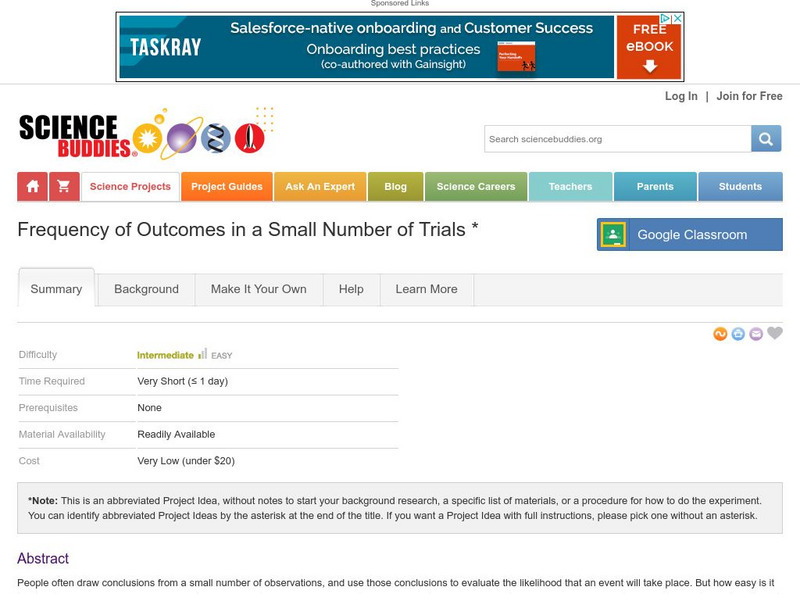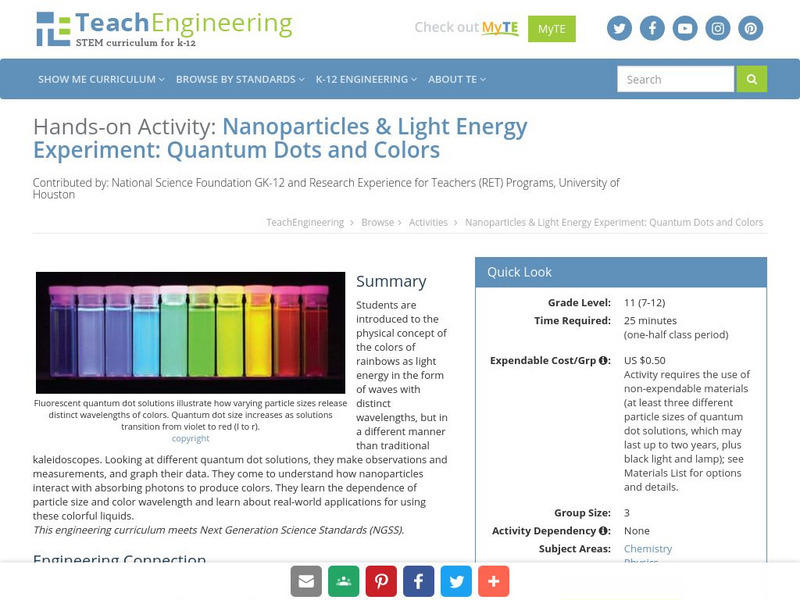Hi, what do you want to do?
Transforming Education
Self-Efficacy Toolkit
A PowerPoint presentation prepares instructors for teaching learners about self-efficacy, a key competency of social-emotional learning. The 29-page presentation is designed to give administrators and teachers a deeper understanding of...
PBS
Kqed: Quest: Education: Media Making Toolkit [For the Science Classroom]
A comprehensive guide to integrating media-making into a science classroom provides an engaging way for students to demonstrate knowledge and build 21st-century learning skills. Supplies tools for teachers to make science-based media,...
PBS
Kqed: Quest: Education: Media Making Toolkit [For the Science Classroom]
A comprehensive guide to integrating media-making into a science classroom provides an engaging way for students to demonstrate knowledge and build 21st-century learning skills. Supplies tools for teachers to make science-based media,...
SRI International
Performance Assessment Links in Science: Do You See What I See? (Lesson)
For this Grade Two performance task, students observe the contents of a terrarium and explain the purpose of the water, rocks and soil inside it.
SRI International
Performance Assessment Links in Science: Rain Drops
Students make predictions and test the effect water has on various building materials. Seven different building materials, a hand lens and a dropper are required. This activity only takes 15 minutes.
E-learning for Kids
E Learning for Kids: Science: Easter Island: Senses: Observation of Living Familiar Things
Students investigate how the senses are used to make observations about objects and things in the environment.
CK-12 Foundation
Ck 12: Earth Science: Science Fact or Opinion?
[Free Registration/Login may be required to access all resource tools.] Presents the relationships of facts, explanations, and opinions in science.
Science Buddies
Science Buddies: Frequency of Outcomes in a Small Number of Trials
People often draw conclusions from a small number of observations, but how easy is it to draw the wrong conclusion? Here is a simple project that shows the importance of making enough observations before making a prediction.
Science Buddies
Science Buddies: Slime Chemistry
Have you ever wondered how fun toys like Silly Putty, Gak, and Slime are made? These products are so much fun because of the properties of polymers, which make them delightfully bouncy, stretchy, sticky, moldable, breakable, hard, soft,...
Science Buddies
Science Buddies: How Sweet It Is: Hummingbird Food Preferences
Do you like to watch hummingbirds? Have you ever wondered why there is specialty hummingbird food? What is it about the food that makes it so appealing? In this zoology science fair project, you will observe these remarkable creatures...
Other
The Evidence for Evolution: Biogeography
These pages are part of a site called "Evolution," that accompanies a textbook by the same name. Mark Ridley is the author. These pages are about the house sparrow and the differences that can be observed in it in different geographical...
The Wonder of Science
The Wonder of Science: 1 Ps4 2: Illumination and Darkness
This NSTA vetted source includes resources to allow students to make observations that prove objects in darkness need light to be illuminated. Included are assessment ideas, videos, examples, lesson plans, and photos of student work.
Utah Education Network
Uen: 1st Grade Act. 17: Observing Plants Through a Journal
This lesson engages students in learning about plant growth. Students will observe changes in a growing plant and then will write in their discovery journals to write observations and hypotheses about the plant growth. Students will also...
National Science Teachers Association
Nsta: Science & Engineering Practices: Obtaining, Evaluating, Communication
This site from NSTA includes a progression of the Science and Engineering Practice for obtaining, evaluating, and communicating information. In addition, thereare performance expectations that make use science and engineering practices.
Science Education Resource Center at Carleton College
Serc: Investigating Three Main Ingredients Needed to Create a Cloud in a Bottle
In the science lab, students will create and observe the conditions necessary to make a cloud in a bottle.
SRI International
Performance Assessment Links in Science: Mystery Boxes
Students test their observation skills as they make predictions about the objects that are in three different boxes.
Concord Consortium
Concord Consortium: Stem Resources: Making and Breaking Bonds
A look at the processes of association and dissociation in chemical bonding. Observe simulations that show the influence of temperature on making and breaking of bonds, how diatomic molecules form, and what determines the speed of...
Utah Education Network
Uen: Enlightening Explorations
This lesson engages students in making observations about different features of light. Students will circulate in different light stations, reflect on what they have observed, and then write about what they learned.
TeachEngineering
Teach Engineering: Quantum Dots and Colors
Students are introduced to the physical concept of the colors of rainbows as light energy in the form of waves with distinct wavelengths, but in a different manner than traditional kaleidoscopes. Looking at different quantum dot...
Science Education Resource Center at Carleton College
Serc: Cube Puzzle and Toilet Paper Roll Model in Teaching the Nature of Science
This instructional activity incorporates inexpensive materials such as carton boxes, toilet paper roll tube, strings and toothpicks. It engages students to conduct pattern observation, prediction, testing and ends up with a model...
Science Education Resource Center at Carleton College
Serc: Observing and Creating Sketches of an Outdoor Environment
Students use their senses to observe nature then sketch a plant and/or animal in their science journals using detail and color. Using these sketches, they will create classroom books which are shared with the class.
University of Missouri
Microbes in Action: Classroom Activities: Composting by Microbes
A science experiment to observe how materials decompose over time, By recording the smell, appearance, and movement of materials over three weeks, students will be able to make conclusions about their decompositions. Students will also...
Exploratorium
Exploratorium: Science Snacks: Bronx Cheer Bulb
In this activity observe how light sources flash as you give them a raspberry. As you complete the activity, make a conclusion about what is wiggling the lights or you.
Other
Rooted and Growing: Kindergarten Science Unit: Objects and Materials [Pdf]
A collection of science lessons where students explore the characteristics of different materials and everyday objects and create their own objects and art. They study the properties of the materials that make them strong, absorptive,...






![Kqed: Quest: Education: Media Making Toolkit [For the Science Classroom] Website Kqed: Quest: Education: Media Making Toolkit [For the Science Classroom] Website](https://content.lessonplanet.com/knovation/original/245823-e730f67262f9a7f20ea974f3178b54ff.jpg?1661496315)
![Kqed: Quest: Education: Media Making Toolkit [For the Science Classroom] Website Kqed: Quest: Education: Media Making Toolkit [For the Science Classroom] Website](https://content.lessonplanet.com/knovation/original/246841-d486db05b9554a6d83889d2481c68ebc.jpg?1661803394)

















